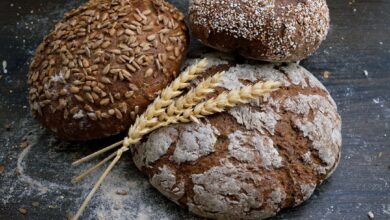Best Free Family Calendar App

Juggling school schedules, soccer practices, dentist appointments, and family dinners can feel like a full-time job! As a busy mom of three, I know the struggle all too well. That’s why a good family calendar app is an absolute lifesaver. The best part? You don’t have to break the bank to get one. There are some fantastic free options out there that can help you keep your family organized and on track.
But with so many apps available, how do you choose the right one? Don’t worry, I’ve done the research for you. I’ve tested several free family calendar apps and narrowed it down to my top picks based on ease of use, features, and overall value. Let’s dive in and find the perfect app to bring some calm and order to your family’s chaos!
My Top Picks for Free Family Calendar Apps
Here are my recommendations for the best free family calendar apps, along with what makes each one stand out:
Google Calendar: The Classic and Reliable Choice
Google Calendar is a solid choice because it’s already integrated with many Android phones and easily accessible on iPhones and computers. Most people already have a Google account, which makes setup a breeze. You can create separate calendars for each family member or activity (like “School,” “Sports,” or “Mom’s Work”) and color-code them for easy visual organization. Sharing calendars with family members is simple, allowing everyone to see the latest updates.
One of the best things about Google Calendar is its integration with other Google services, like Gmail and Google Meet. You can automatically add events from emails and easily create video calls directly from the calendar. However, it’s worth noting that the interface can feel a bit cluttered for some, especially if you’re new to digital calendars.
Microsoft Outlook Calendar: Great for Microsoft Families
If your family is heavily invested in the Microsoft ecosystem (using Windows computers, Outlook email, etc.), then Microsoft Outlook Calendar is a fantastic option. It offers similar features to Google Calendar, including shared calendars, color-coding, and event reminders. The interface is clean and intuitive, and it integrates seamlessly with other Microsoft apps like To Do (a great task management app) and Microsoft Teams.
A cool feature of Outlook Calendar is the ability to create “Family Groups.” This makes it even easier to share calendars and coordinate events with your loved ones. While Outlook Calendar is available on both Android and iOS, it truly shines when used on Windows devices.
Cozi: The Family Organizer Powerhouse
Cozi is specifically designed for families, and it shows! It goes beyond just calendars, offering features like shared shopping lists, to-do lists, and even a family journal. The calendar is easy to use, with a clear visual layout that allows you to see everyone’s schedules at a glance. You can assign tasks to family members and set reminders to make sure everyone stays on track.
Cozi also has a meal planning feature, which can be a lifesaver for busy parents. You can store recipes, plan your weekly meals, and even create a shopping list based on your meal plan. While the free version of Cozi is ad-supported, it’s still packed with features that make it an excellent choice for families looking for an all-in-one organization solution.
FamilyWall: A Central Hub for Family Life
FamilyWall is another excellent option for families who want more than just a calendar. It combines calendar functionality with features like location sharing, photo albums, and messaging. The calendar is easy to use and allows you to assign events to specific family members. The location sharing feature can be particularly useful for keeping track of kids who are out and about.
FamilyWall also has a private social network where family members can share photos, videos, and messages. This can be a great way to stay connected, especially for families who live far apart. Like Cozi, FamilyWall has a premium version with additional features, but the free version is still quite comprehensive.
Tips for Choosing the Right Family Calendar App
With so many great free options available, it can be tough to choose the right one. Here are a few tips to help you make the best decision for your family:
- Consider your family’s needs: What are your biggest organizational challenges? Do you need help with scheduling, task management, meal planning, or communication? Choose an app that addresses your specific needs.
- Think about your tech ecosystem: Do you primarily use Android or iOS devices? Are you heavily invested in Google or Microsoft services? Choose an app that integrates seamlessly with your existing technology.
- Try out a few different apps: Most free calendar apps allow you to sign up and start using them immediately. Download a few of your top choices and see which one you find the most intuitive and user-friendly.
- Get the whole family involved: Ultimately, the success of a family calendar app depends on everyone using it consistently. Get your family’s input on which app they prefer and encourage them to use it regularly.
Benefits of Using a Family Calendar App
Using a family calendar app can bring a ton of benefits, from reducing stress to improving communication. Here are just a few of the advantages:
Reduced Stress: Knowing everyone’s schedules and responsibilities helps reduce stress and prevents last-minute surprises.
Improved Communication: A shared calendar keeps everyone on the same page and reduces misunderstandings.
Better Time Management: By seeing how everyone’s time is allocated, you can better manage your own time and ensure that important tasks get done.
Increased Family Connection: Coordinating schedules and activities can create more opportunities for family bonding and connection.
Safety Considerations
While family calendar apps are incredibly useful, it’s important to be aware of potential privacy and security concerns. Here are a few tips to keep your family’s information safe:
Use strong passwords: Choose a strong, unique password for your calendar app account and don’t share it with anyone.
Be mindful of what you share: Avoid sharing sensitive information, such as social security numbers or bank account details, in your calendar events or notes.
Review privacy settings: Take the time to review the app’s privacy settings and adjust them to your comfort level.
Teach kids about online safety: If your children use the calendar app, teach them about online safety and encourage them to report anything that makes them feel uncomfortable.
Frequently Asked Questions
Are free family calendar apps secure?
Most reputable free family calendar apps use encryption and other security measures to protect your data. However, it’s always a good idea to read the app’s privacy policy to understand how your information is being used and stored. Also, ensure you use a strong password and are mindful of the information you share.
Can I use a free family calendar app on multiple devices?
Yes, most free family calendar apps are designed to sync across multiple devices, including smartphones, tablets, and computers. This allows everyone in the family to access the calendar from their preferred device.
Do free family calendar apps have ads?
Some free family calendar apps are ad-supported, which means you may see advertisements within the app. However, the ads are typically unobtrusive and don’t detract from the overall user experience. If you find the ads annoying, you may have the option to upgrade to a premium version of the app to remove them.
Can I share my calendar with people outside my family?
Yes, most family calendar apps allow you to share your calendar with people outside your family, such as friends, coworkers, or caregivers. You can typically control the level of access you grant to others, allowing them to view, edit, or only see when you are free/busy.
Choosing the best free family calendar app depends on your unique family needs and preferences. Take the time to explore the options I’ve listed, and don’t be afraid to try out a few different apps before settling on the one that works best for you. With a little effort, you can find a free calendar app that will help you stay organized, reduce stress, and strengthen your family connections. Happy scheduling!
Related Posts
| Best Free Shared Calendar App |
| Best Family Calendar App Free |



